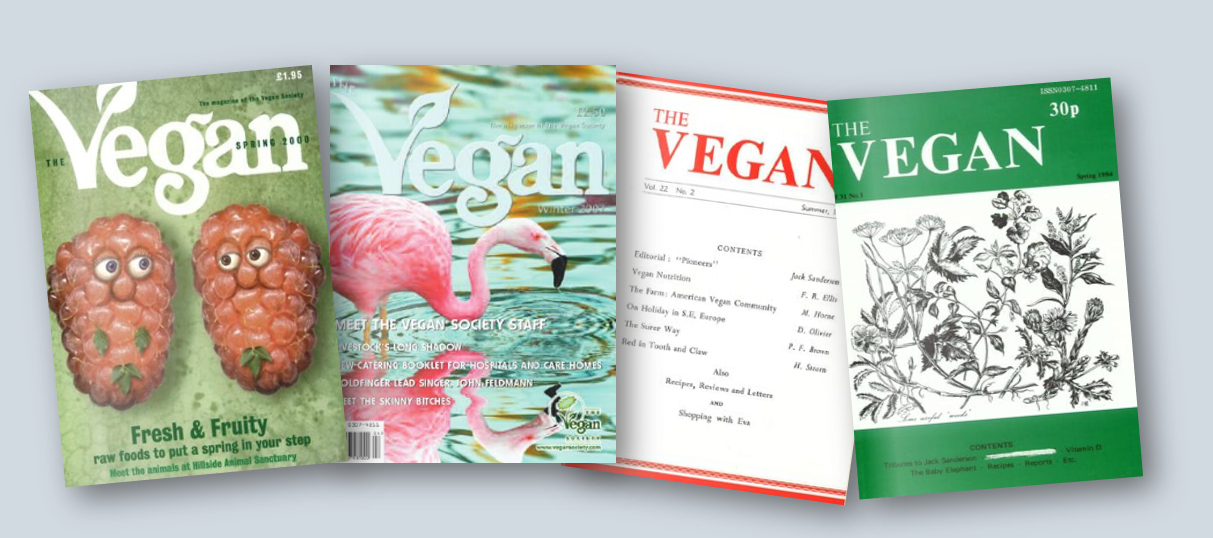World Vegan Day was launched in 1994 to commemorate the 50th anniversary of The Vegan Society. Since then, veganism has become a cultural triumph making November 1st a day for celebration not only for veganism but for the society’s organizational success. Its radical vision and democratic structure make it an unlikely hero–I undertook a content analysis of all issues of The Vegan Society’s publication, The Vegan, to chart its rocky road to the 21st century.
The Vegan Society emerged in England in November of 1944 following a friendly but drawn-out schism within the British Vegetarian Society. While the fledgling organization was small, radical, and almost completely unfunded, it would manage to survive into the 21st century, influencing global food culture and challenging humanity’s relationship with food and other animals. What I uncovered was an organization that struggled to maintain its radical agenda in a social movement environment that had largely professionalized.
Throughout the early-to-mid 20th century, The Vegan Society prioritized Nonhuman Animal liberation, but with the neoliberalization of nonprofits in the 1980s, the organization opted to incorporate, turning a volunteer organization into a corporate competitor. A number of changes occurred as a result. The bureaucratic structural style allowed it to accommodate spikes in public interest associated with popular documentaries (such as The Animal Film), but it also necessitated a heavy reliance on fundraising to support its ambitions for growth. As a consequence, the radical claimsmaking of years prior tempered to emphasize vegan lifestyles and nutrition.
Today, The Vegan Society rarely engages the cutting-edge animal rights discourse it once did, but instead plays to less abrasive climate change themes which are not in any way animal-centric. This is a story common to organizational veterans of the Nonhuman Animal rights movement. Few organizations are able to maintain a radical agenda while also pursuing mainstream politics and economic growth. What this means for Nonhuman Animal liberation in the long term is questionable.
Read the full article here.
 Readers can learn more about the social movement politics of Nonhuman Animal rights and veganism in my 2019 publication, Piecemeal Protest: Animal Rights in the Age of Nonprofits. The beautiful cover art for this text was created by vegan artist Lynda Bell and prints are available on her website, artbylyndabell.com.
Readers can learn more about the social movement politics of Nonhuman Animal rights and veganism in my 2019 publication, Piecemeal Protest: Animal Rights in the Age of Nonprofits. The beautiful cover art for this text was created by vegan artist Lynda Bell and prints are available on her website, artbylyndabell.com.
Receive research updates straight to your inbox by subscribing to my newsletter.
